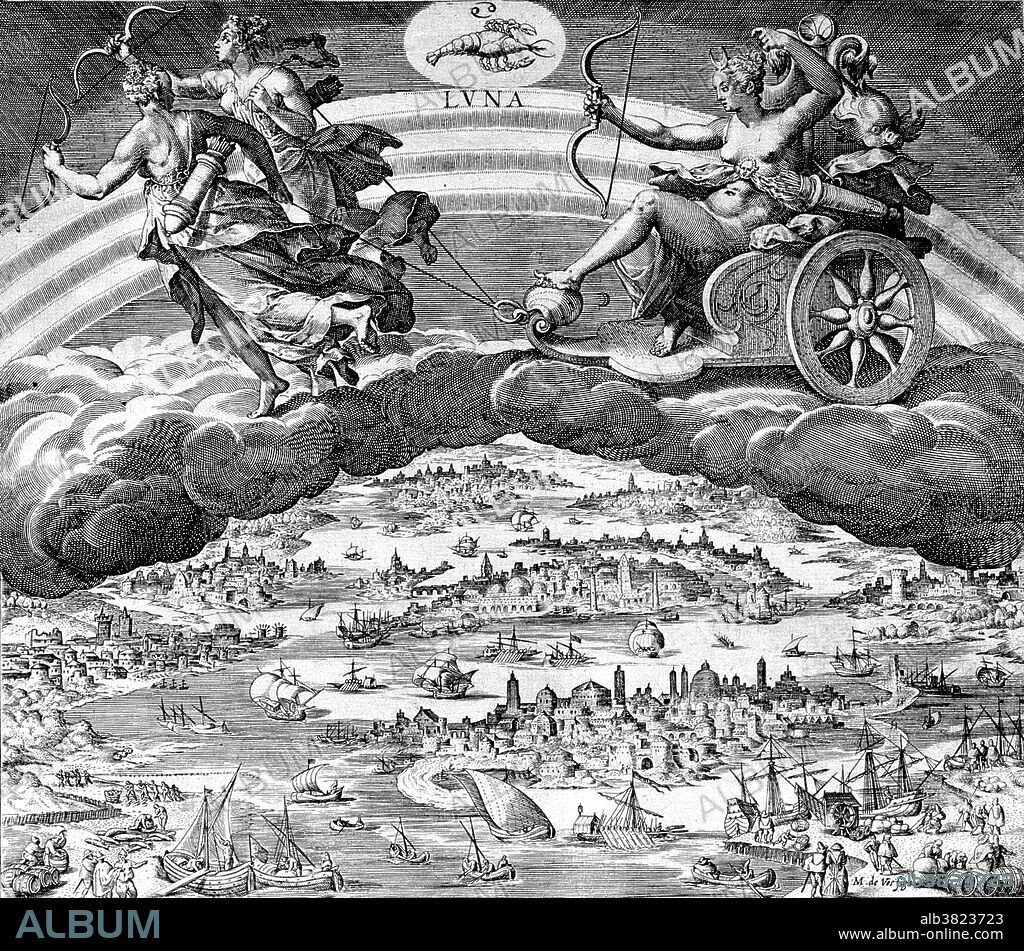alb3823723
Luna, Roman Moon Goddess

|
Add to another lightbox |
|
Add to another lightbox |



Title:
Luna, Roman Moon Goddess
Caption:
The Moon in her chariot, riding across the heavens. In ancient Roman religion and myth, Luna is the divine embodiment of the Moon (Latin luna; cf. English "lunar"). She is often presented as the female complement of the Sun (Sol) conceived of as a god. Luna is also sometimes represented as an aspect of the Roman triple goddess (diva triformis ), along with Proserpina and Hecate. Luna is not always a distinct goddess, but sometimes rather an epithet that specializes a goddess, since both Diana and Juno are identified as moon goddesses. In Roman art, Luna's attributes are the crescent moon plus the two-yoke chariot (biga ). Luna's Greek counterpart was Selene. In Roman art and literature, myths of Selene are adapted under the name of Luna. Engraving by Jan Sadeler after Martin de Vos.
Credit:
Album / Science Source / Wellcome Images
Releases:
Model: No - Property: No
Rights questions?
Rights questions?
Image size:
3900 x 3422 px | 38.2 MB
Print size:
33.0 x 29.0 cm | 13.0 x 11.4 in (300 dpi)
Keywords:
ANCIENT CIVILIZATION • ANCIENT CULTURE • ANCIENT ROMAN RELIGION • ANCIENT • ANTIQUITY • ART • ARTWORK • BW • CELEBRITY • CHARIOT • CLASSICAL • CRESCENT MOON • DIVINE EMBODIMENT • DRAWING • EMBODIMENT OF MOON • ENGRAVING • FAMOUS • FEMALE COMPLEMENT OF SUN • GODDESS • GRECO-ROMAN MYTH • GRECO-ROMAN MYTHOLOGY • GREEK COUNTERPART • GREEK GODDESS • GREEK MYTH • GREEK MYTHOLOGY • GREEK • GREEK-ROMAN MYTHOLOGY • HISTORIC • HISTORICAL • HISTORY • ILLUSTRATION • IMPORTANT • LEGEND • LEGENDARY • LUNA • MYTH • MYTH: ROMAN • MYTHIC • MYTHICAL • MYTHOLOGICAL • MYTHOLOGY • NOTABLE • RELIGION • RELIGIOUS • ROMAN GODDESS • ROMAN MYTH • ROMAN MYTHOLOGY • ROMAN RELIGION • ROMAN • SELENE • TRANSPORTATION • TWO-WHEELED CHARIOT • TWO-YOKE • WELL-KNOWN • WHEELED CHARIOT • WOMEN
 Pinterest
Pinterest Twitter
Twitter Facebook
Facebook Copy link
Copy link Email
Email

